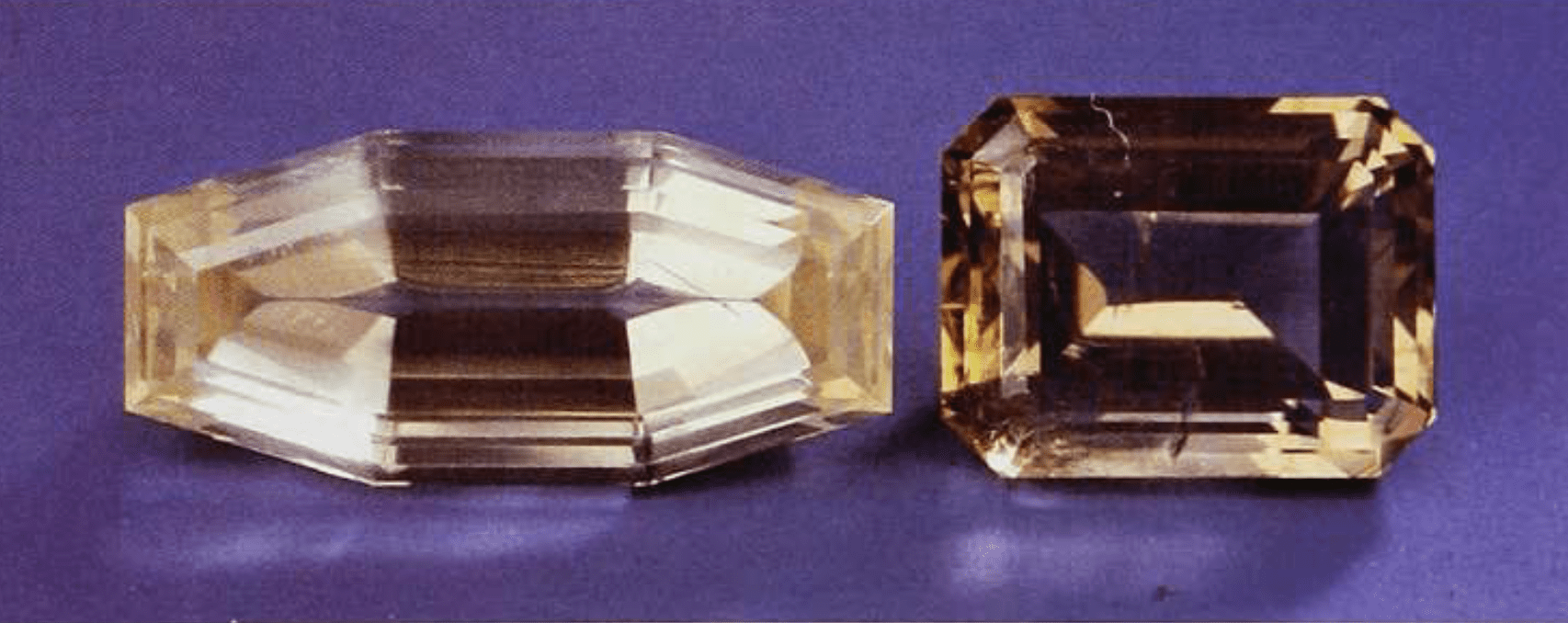Albite Value, Price, and Jewelry Information
Albite, usually colorless but sometimes yellow, pink, gray or reddish. Translucent albite is sometime colored green by chrome jadeite. It is also a component of trachipe emeralds.
1 Minute Read
Albite, usually colorless but sometimes yellow, pink, gray or reddish. Translucent albite is sometime colored green by chrome jadeite. It is also a component of trapiche emeralds.
Start an IGS Membership today
for full access to our price guide (updated monthly).Albite Value
Comments
Translucent albite is sometimes found that is colored a rich green by inclusions of chrome-rich jadeite. Albite is sometimes intergrown with emerald, especially in the strange hexagonal skeletal crystals known as trapiche emeralds. Facetable albite from Madagascar has indices: a = 1.530-1.531; β= 1.532-1.533; γ= 1.539-1.540; birefringence 0.009-0.010; density 2.62. Small faceted gems are fairly rare, almost always from the tips of cleavelandite crystals. Albite gems are colorless in most cases and not exciting to look at. Albite moonstones are known from many localities (discussed below).
Name
Albite comes from the Latin albus, meaning white, because the mineral is usually white.
Occurrence
Albite usually forms at low temperatures; it is common in pegmatites, granite, and other igneous rocks, various metamorphic rocks, also marbles.
- Essex County New York.
- Ontario, Canada; Quebec, Canada; Madagascar; Austria.
- Rutherford Mine, Amelia, Virginia: fine colorless albite, facetable, large; crystals are platy variety known as cleavelandite.
- Upson County, Georgia: moonstone.
- South Dakota: cleavelandite.
- Brazil: cleavelandite.
- Kenya: colorless crystals, some with blue or yellow tinge.
- (Indices: 1.535/1.539/1.544; S.G. 2.63). Many other localities worldwide.
Stone Sizes
Clean gems are usually in the 1-3 carat range, from cleavelandite crystals. Catseye gems up to about 50 carats are known.
- Royal Ontario Museum (Toronto, Ontario, Canada): 12.25 (catseye, Burma).
- Devonian Group (Calgary, Alberta, Canada): 11.13 (cateye, white).
Joel E. Arem, Ph.D., FGA
Dr. Joel E. Arem has more than 60 years of experience in the world of gems and minerals. After obtaining his Ph.D. in Mineralogy from Harvard University, he has published numerous books that are still among the most widely used references and guidebooks on crystals, gems and minerals in the world.
Co-founder and President of numerous organizations, Dr. Arem has enjoyed a lifelong career in mineralogy and gemology. He has been a Smithsonian scientist and Curator, a consultant to many well-known companies and institutions, and a prolific author and speaker. Although his main activities have been as a gem cutter and dealer, his focus has always been education. joelarem.com
Related Articles
Black Diamond Value, Price, and Jewelry Information
Chameleon Diamond Value, Price, and Jewelry Information
Gray Diamond Value, Price, and Jewelry Information
Green Diamond Value, Price, and Jewelry Information
Latest Articles
Amethyst Sources Around the World: The Geological Story Behind These Purple Gemstones
Brazilianite Value, Price, and Jewelry Information
Ruby-Glass Composites vs Leaded Glass Clarity Enhancements
Morganite Buying Guide
Never Stop Learning
When you join the IGS community, you get trusted diamond & gemstone information when you need it.
Get Gemology Insights
Get started with the International Gem Society’s free guide to gemstone identification. Join our weekly newsletter & get a free copy of the Gem ID Checklist!
